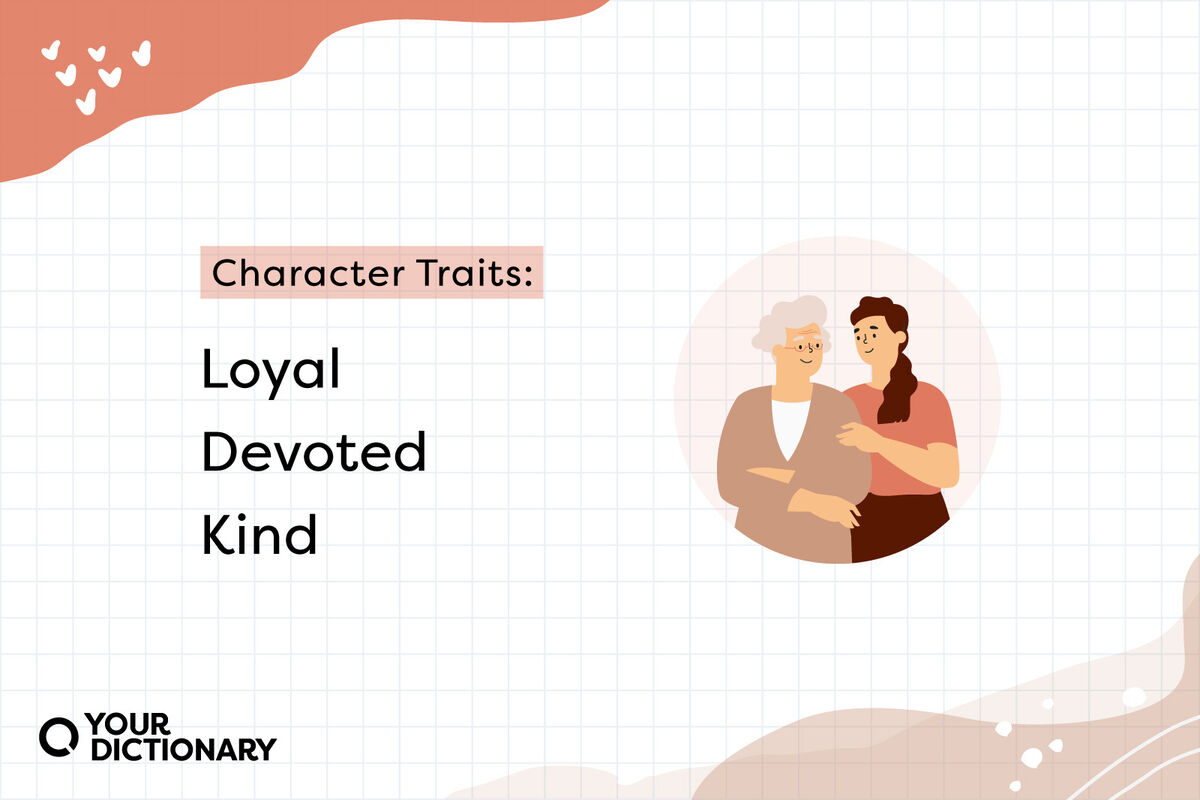
Character traits describe aspects of a person's behavior, specifically inherent feelings, actions, and thoughts of a character in a book, movie, or other form of entertainment. Character traits are often labeled with descriptive adjectives such as patient, unfaithful or jealous.
Values and Beliefs as Character Traits
Some character traits reveal positive aspects of a person's underlying values or beliefs.
- generosity
- integrity
- loyalty
- devoted
- loving
- kindness
- sincerity
- self-control
- peaceful
- faithful
- patience
- determination
- persistence
- open-minded
- fair
- cooperative
- tolerant
- optimistic
- spiritual
Dark Side Characteristics
No one is perfect; everyone has a bit of a darker side. Some people may have character traits that are generally viewed with a negative connotation.
- dishonest
- disloyal
- unkind
- mean
- rude
- disrespectful
- impatient
- greed
- abrasive
- pessimistic
- cruel
- unmerciful
- narcissistic
- obnoxious
- malicious
- pettiness
- quarrelsome
- caustic
- selfish
- unforgiving
Leadership Characteristics
A person's character traits can impact how they approach leading people and whether or not others are likely to see them as effective leaders. A person's leadership style is closely related to various character traits.
- dominance
- confidence
- persuasive
- ambitious
- bossy
- resourceful
- decisive
- charismatic
- authoritarian
- enthusiastic
- bold
- proactive
Common Children's Character Traits
Children's character traits may not be fully developed just yet, but some traits tend to inherently be associated with kids. Additionally, parents often seek to teach certain character traits to their children.
- playful
- zany
- active
- wild
- silly
- affectionate
- funny
- rough
- talkative
- rowdy
- smart
- fidgety
- shy
- lively
- joyful
- stubborn
Character Traits in Fiction
In stories, novels and movies, there are often archetypes of characters. For instance, there might be a fearless hero, a cruel leader or a helpless heroine who needs to be rescued. Writers use these classic traits to help readers identify what role each character plays in the story.
Heroic Characters
Heroic main characters tend to have certain character traits that differentiate them from supporting characters or villains.
- dauntless
- strong
- courageous
- reliable
- fearless
- daring
- tough
- brave
Villainous Characters
When describing a story's villain, writers will generally endow the character with a variety of negative traits.
- ugly
- evil
- cunning
- deceptive
- murderous
- immoral
- vengeful
- maniacal
Romantic Lead
Romantic leads who seek to woo a would-be sweetheart tend to have certain appealing character traits.
- charm
- wit
- sentimentality
- affection
- intensity
- charisma
Character Traits vs. Personality Traits vs. Core Values
Often, someone's character and personality are intertwined. But believe it or not, the two are quite distinct. The easiest way to separate the two is to say personality traits are observations about a real person's thoughts, emotions, and behaviors. They are visible from the outside and inside as some are not as obvious and developed over time. Character traits are very similar to personality traits except character traits define the traits of a character in a story while personality traits describe the traits of a real person. Core values are also similar to character and personality traits. They're more than surface-level observations; they're guiding principles for life.
Bring Characters to Life
By spending some time thinking about and observing examples of character traits, you can learn more about yourself and others. The best way to learn about a person's character is by watching how they interact with other people and the world around them.
You can also use character traits to develop rich characters in your writing that are more true-to-life. For additional help in rounding out a character in your writing, check out a list of words that describe personality traits. Having well-developed characters in your writing will make your characters more three-dimensional and allow the reader to identify with them.